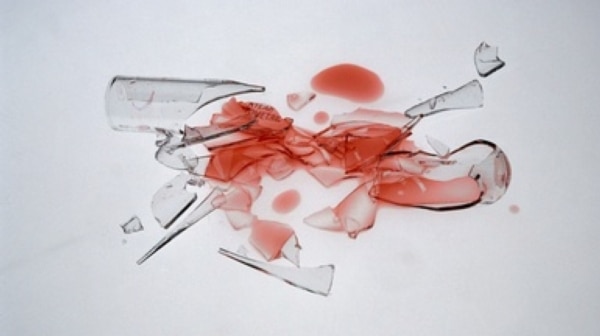Stopping Splashes with Smarter Surfaces
智能表面消除溅射
Understanding the physics of how a liquid splashes when it hits a surface is allowing researchers to design new surfaces that limit splashing.
理解液体撞击表面溅射的物理机理,帮助研究者们设计新型表面抑制溅射。
撰文/播音:瑞安·曼德尔鲍勃(Ryan Mandelbaum)
翻译:郭鑫鹏
审校:丁可含
When you spill a liquid on the ground, it splashes. But if you’re a guy using a urinal, or, more important, if the liquid is dangerous, say, an infected blood sample, you want to limit splashing. In other words:
当你把一种液体洒到地上,它溅开来,但是当你还是用小便器的小孩时,或者,更重要的是,如果那是危险性液体,比如受到感染的血液样本,你希望能够限制它的溅射。换句话说:
“If an accident happens, you want the drop to fall onto the surface and that’s it. It just stays there as a single body.”
“如果意外发生了,你希望它落在表面上的时候保持原样,就是说它依然保持单一个体。”
Alfonso Castrejón-Pita, an engineering professor at Oxford University.
牛津大学工程教授阿方索·卡斯特雷洪·皮塔说。
“So you could imagine the situation of having your [lab] bench covered with these kinds of materials so they become safer. And the same for a kitchen. Now you’re in a kitchen, you are handling raw chicken, and the last thing you want is to have splashes, where you could be transmitting salmonella or these kinds of ugly things that you could get when you are handling raw meat.”
“所以你可以想象这样的情形,当你实验室桌子覆盖上这种材料,它们会更安全。对于厨房也是这样。你现在在厨房中,处理生鸡肉,你绝不希望溅到其他地方,因为在此过程中可能会传播沙门氏菌或其他一些不好的东西。”
He and his colleagues found that the softer the surface the smaller the splash. Their study is in the journal Physical Review Letters. [Christopher J. Howland et al., It’s Harder to Splash on Soft Solids]
他和他的同事们发现,表面越软,溅射越小。他们的研究发表在期刊《物理评论快报》上。
The researchers prepared a bunch of increasingly squishy silicone surfaces and released drops of ethanol onto them from different heights. They captured video of the splashes with a super-slow-motion camera that records more than 100,000 frames per second. And they found that the drops eventually stopped splashing on the softest surfaces.
研究者们准备一束格外湿软的硅胶表面,从不同的高度往上面释放乙醇液滴。他们用超慢动作摄像机捕捉溅射的过程,最后得到了超过10万帧每秒的视频。他们发现液滴最终会在极软的表面上停止溅射。
So far that all sounds predictable. But computer models of the splashes revealed interesting details.
目前为止所有似乎都在预料之中,但是计算机关于溅射的模型揭示了一些有趣的细节。
At the moment the blob of liquid makes contact with the surface, the bottom of the drop flattens out and the pressure increases. The ring of pressure spreads towards the drop’s edges. If the surface is too hard, the ring of high pressure creates tiny droplets that explode from the main drop’s edges. But the softest surfaces deform in response to the drop hitting them-and that prevents the pressure from getting high enough to cause that explosion.
当一滴液体接触到表面时,液滴底部变平,受到的压力增加。压力以环形扩散到液滴边缘。如果接触表面太硬,高压力环导致主液滴边缘爆裂产生微滴。但是极其松软的表面在受到液滴撞击时产生形变,这使压力不会高到产生爆裂。
Sadly, you won’t see squishy coatings on urinals just yet, or in your laboratories-antisplash materials are too frail.
但是遗憾的是,你还不能在便池上或你的实验室中看到湿软的覆盖层,防溅射材料还很脆弱。
“The softest ones are quite delicate so you wouldn’t be able to make a laboratory bench with them, they’d get damaged quite quickly.”
“柔软的材料非常脆弱,你并不能用它来制造实验室桌子,它很快就会损坏。”
So we’d need soft coating materials robust enough to withstand daily wear before the splash is relegated to history’s trash bin…or toilet.
所以我们需要柔软且足够坚固的涂层,以经受住日常磨损。这样才能完全消除溅射。
-Ryan Mandlbaum

 京公网安备11010502039775号
京公网安备11010502039775号  京公网安备11010502039775号
京公网安备11010502039775号 
















